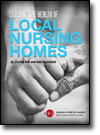Tag
chicago tribune
-
Tsouderos looks at federal funding of alternative medicine
In her latest series, Chicago Tribune reporter Trine Tsouderos, whose award-winning reporting has brought her hard-nosed approach to investigating less-proven…

-
•
Americans unprepared to pay for long-term care
In the Chicago Tribune, Deborah Shelton examines how unprepared Americans are to pay for their own long-term care needs as…

-
Baby’s death illustrates how health IT can introduce complexity, error to system
Chicago Tribune reporters Judith Graham and Cynthia Dizikes explore the pitfalls of health information technology through the story of an…

-
•
Winning work: Swine flu, costs and mental health
In the SPJ’s 2010 Sunshine State Awards, AHCJ members made their presence felt in the “Medical/Health Care/Science Reporting” category, where…

-
•
Legacy of Agent Orange continues in U.S., Vietnam
The Chicago Tribune is in the middle of an ambitious five-part series in which reporters Jason Grotto and Tim Jones…

-
•
Tribune investigates nursing home psychiatrist
In the latest installment of the Chicago Tribune‘s investigation into Illinois nursing homes, Sam Roe and ProPublica’s Christina Jewett investigate…

-
•
Trib looks into dangerous nursing home residents
The Chicago Tribune‘s Gary Marx and David Jackson examined the effectiveness of Illinois regulations implemented in 2006 to protect nursing…

-
Evaluation of nonprofits’ charity care continues
If you’re keeping a list of issues that have been rejuvenated through inclusion in the Baucus bill, you can safely…

-
•
Trib’s Triage blog ends, Graham goes investigative
The Chicago Tribune‘s Triage blog has closed its doors and Judy Graham – the face of the blog for the past…

-
•
Homeless man teaches MD about inequalities
The Chicago Tribune‘s Judith Graham tells the story of a doctor who befriended a homeless man who sold StreetWise magazine…


